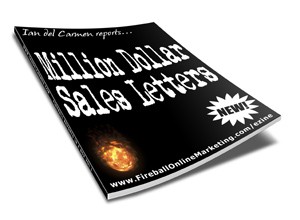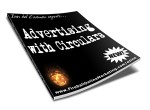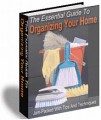
 License Type: Resell Rights
License Type: Resell Rights  File Size: 1,060 KB
File Size: 1,060 KB File Type: ZIP
File Type: ZIP
 SKU: 17780
SKU: 17780  Shipping: Online Download
Shipping: Online Download
Ebook Sample Content Preview:
On your website, your sales page should be the length of what it would be if were doing a mailing, or longer if you're using bullets to emphasize benefits to build the desire. Of course on the Internet you don't have to worry about letterhead stationery or the cost of postage, which is a considerable savings. If, however, you want to also do a mailing campaign then the following would apply. The sales letters in mailings that pull in the most sales are almost always two pages with 1 1/2 spaces between lines. For really big ticket items, they'll run at least four pages. - on an 11 by 17 sheet of paper folded in half. If your sales letter is only two pages in length, there's nothing wrong with running it on the front and back of one sheet of 8 1/2 by 11 paper. However, your sales letter should always be on letterhead paper - your letterhead printed, and including your logo and business motto if you have one.
Regardless of the length of your sales letter, it should do one thing, and that's sell, and sell hard! If you intend to close the sale, you've got to do it with your sales letter. You should never be "wishy-washy" with your sales letter. You do the actual selling and the closing of that sale with your sales letter - any brochure or circular you send along with in your mailing will just reinforce what you say in the sales letter.
There's been a great deal of discussion in the past few years regarding just how long a sales letter should be. A lot of people are asking: Will people really take the time to read a long sales letter? The answer is a simple and time-tested yes indeed! Surveys and tests over the years emphatically prove that "longer sales letters" pull even better than the shorter ones, so don't worry about the length of your sales letter - just make sure that it sells your product for you!
The "inside secret" is to make your sales letter so interesting, and "visionary" with the benefits you're offering to the reader, that he can’t resist reading it all the way through. You break up the "work" of reading by using short, punchy sentences, underlining important points you're trying to make, with the use of sub-headlines, indentations and even the use of a second color, and leaving lots of white space around it. On your website, the sales letter should run down the middle of the page so the viewer doesn't have to keep adjusting the screen to see the whole sentence. This is very distracting and more apt to send that client to another website than losing patience reading a long letter.
Relative to the brochures and circulars you may want to include in your mailing with your sales letter - providing the materials you're enclosing are of the best quality, they will generally reinforce the sale for you. But, if they are of poor quality, look cheap and don't compliment your sales letter, then you shouldn't be using them. Another thing, it will definitely classify you as an independent home worker if you hand-stamp your name/ address on these brochures or advertising circulars instead of having them printed.
Whenever possible, and so long as you have really good brochures to send out, have your printer run them through his press and print your name/address -even your telephone number and company logo - on them before you send them out. The thing is, you want your prospect to think of you as his supplier - the company - and not as just another independent entrepreneur. Sure, you can get by with less expense but you'll end up with fewer orders and in the end, less profits.
Another thing that's been bandied about and discussed from every direction for years is whether to use a post office box number or your street address. Personally, I don't like Post Office Boxes in a business address - because it transmits an aura of instability or temporary location.







